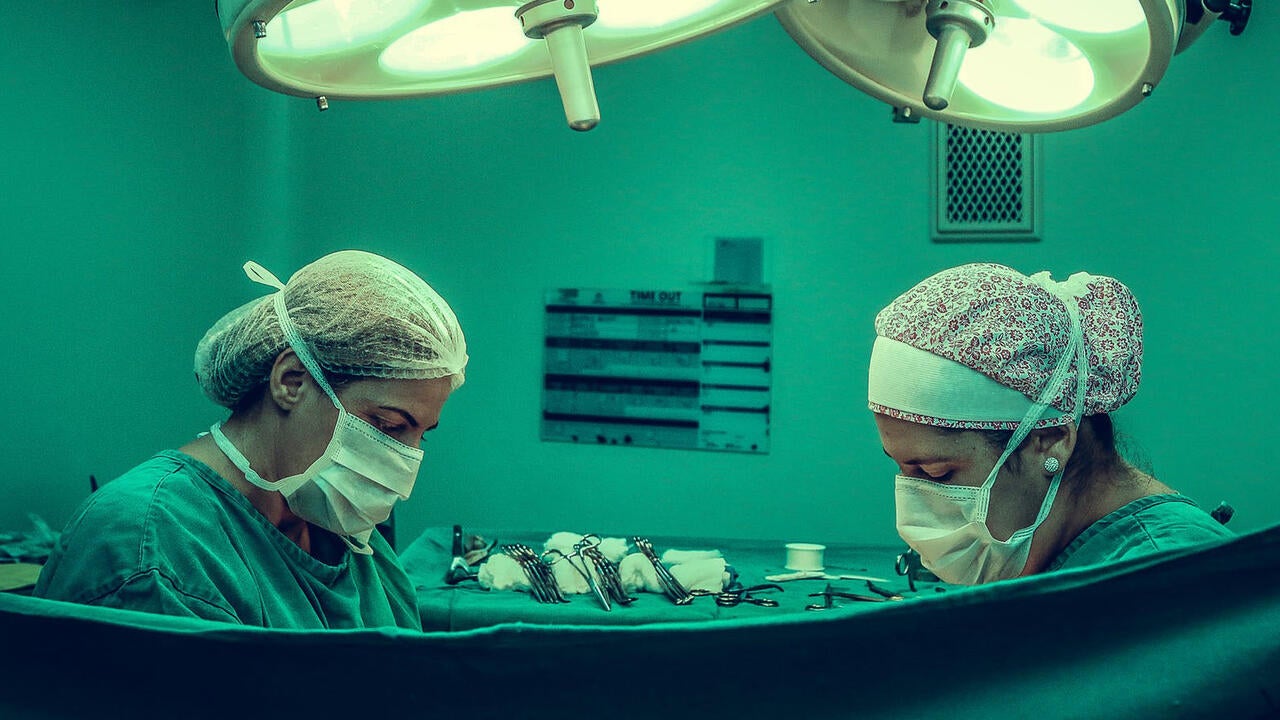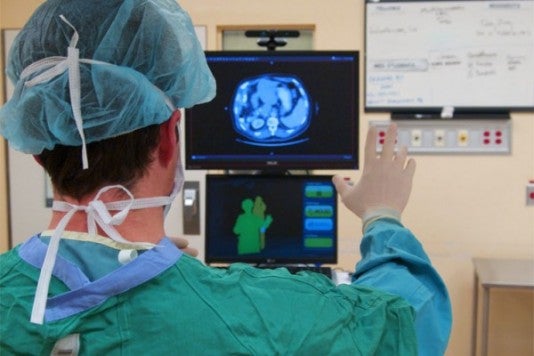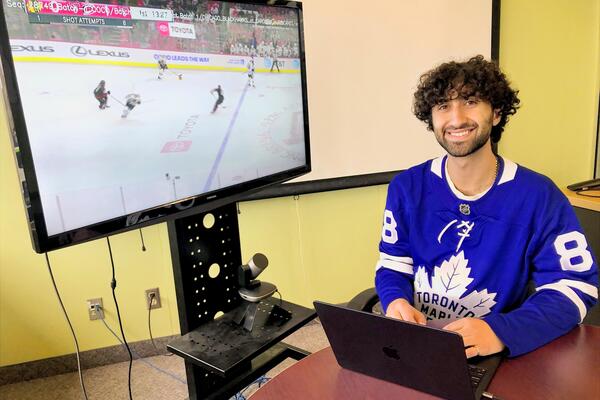
Hands-free system puts surgeons in control of their operating rooms
GestSure allows surgeons to take control of their operating rooms by accessing digital data through simple hand gestures

GestSure allows surgeons to take control of their operating rooms by accessing digital data through simple hand gestures
By Julie Stauffer Faculty of EngineeringMarch 2011. Sunnybrook Hospital, Toronto. A surgical oncology team is working to remove a complex tumour entwined around the patient’s adrenal glands and pancreas.
At one point in the delicate procedure, Dr. Calvin Law puts down his scalpel, turns to a computer screen displaying an image of the tumour and, without touching anything, makes a gesture with his gloved hands. The image rotates, and three Waterloo Engineering grads in the operating room exhale in unison.
“It really was a magical experience,” says Jamie Tremaine (BASc ’06, Mechanical). Together with Matt Strickland (BASc ’06, Electrical) and Greg Brigley (BASc ’03, Computer), he had developed the GestSure system being tested that day.

GestSure solves a major frustration for surgeons and saves valuable time. Because the operating room computer is not sterile or sterilizable, manipulating the CT scans or MRIs it displays means either playing backseat driver as a non-sterile nurse does it or the physician doing it and then taking another 10 minutes to scrub before resuming surgery.
Strickland, who pursued a medical career after completing his engineering degree, knew the challenges first-hand and shared them with Tremaine and Brigley. It was during a run on a warm fall day in 2010 that the engineers discussed using Microsoft’s Xbox Kinect sensor to solve the problem. Three weeks later, they had a prototype.
There were hiccups, of course. Late-night O.R. tests revealed that bright surgical lights could wash out the Kinect’s infrared beam, and it took some tweaking before the system could recognize doctors wearing full surgical gowns.
Now commercially available, the hands-free system has earned high praise from surgeons, plus continent-wide publicity as part of Microsoft’s 2014 Super Bowl ad. Hospitals in Canada, the U.S. and the Middle East are now using the technology, with international distribution deals in the works. But GestSure is thinking bigger. The company is currently raising capital to develop new hardware and grow its tech team.
According to Sharon Fan (BASc ’06, Mechanical), who heads up GestSure’s sales and operations, businesses that don’t move quickly get left behind. “Speed is of the essence in entrepreneurship,” she says.
That’s why Waterloo’s challenging engineering program provides perfect training for the fast-paced world of startups. “Waterloo Engineering teaches you to be focused, adaptive, and constantly prioritize,” she says.
Looking ahead, the GestSure team has one simple business goal: to grow as fast as they possibly can. After all, when you’re revolutionizing the operating room, every minute counts.

Read more
Engineering researchers team up to tackle the plastics pollution problem with microbial innovation and engineering design

Read more
15 University of Waterloo researchers have been named to the annual Highly Cited Researchers™ list for significant contributions to their specific fields of research

University of Waterloo Engineering master's student Liam Salass developed an AI-based system that improved puck detection when analyzing game video. (University of Waterloo)
Read more
University of Waterloo researchers make big strides in hockey analysis using game video
Read
Engineering stories
Visit
Waterloo Engineering home
Contact
Waterloo Engineering
The University of Waterloo acknowledges that much of our work takes place on the traditional territory of the Neutral, Anishinaabeg, and Haudenosaunee peoples. Our main campus is situated on the Haldimand Tract, the land granted to the Six Nations that includes six miles on each side of the Grand River. Our active work toward reconciliation takes place across our campuses through research, learning, teaching, and community building, and is co-ordinated within the Office of Indigenous Relations.